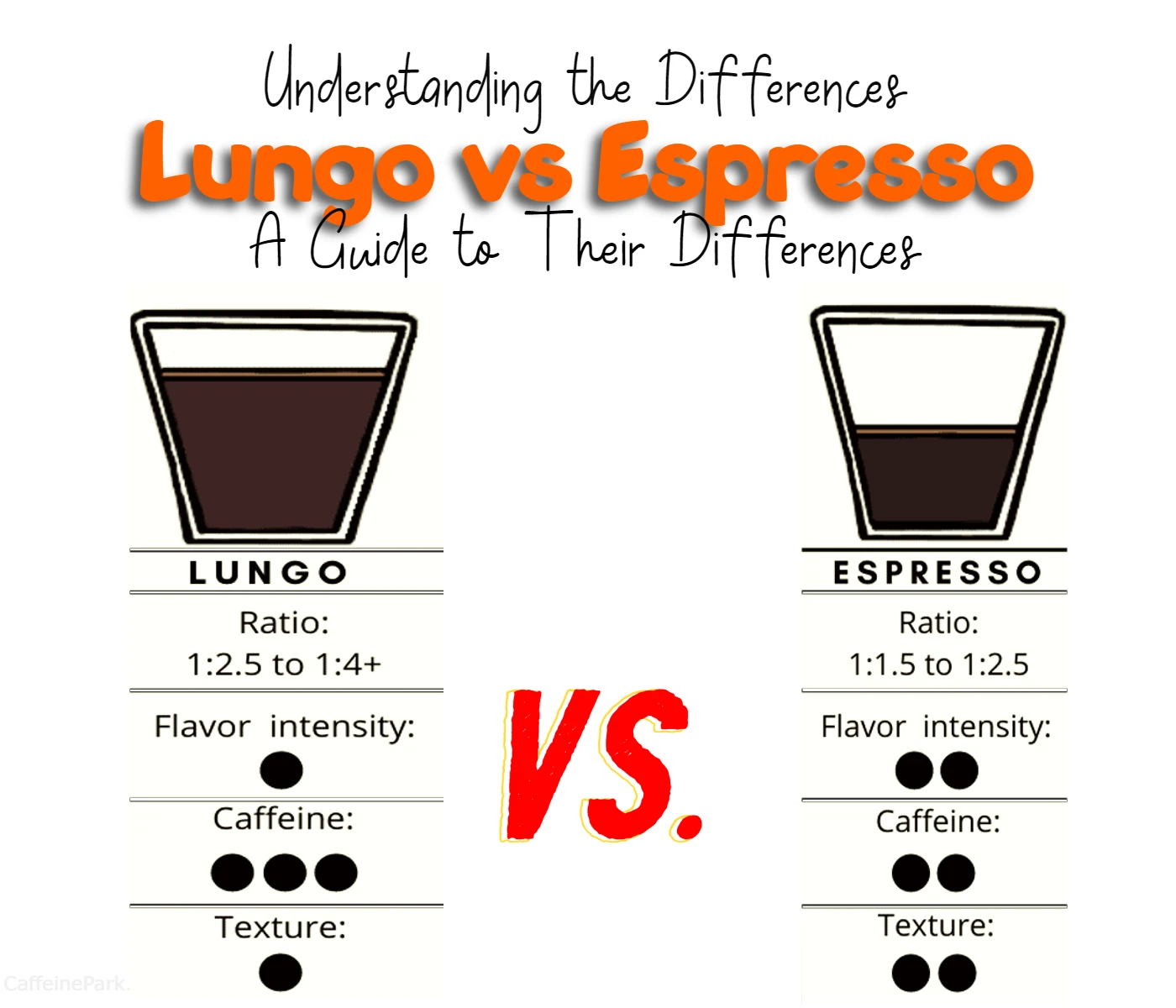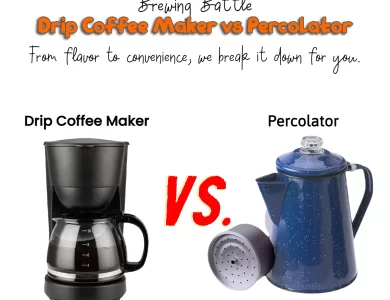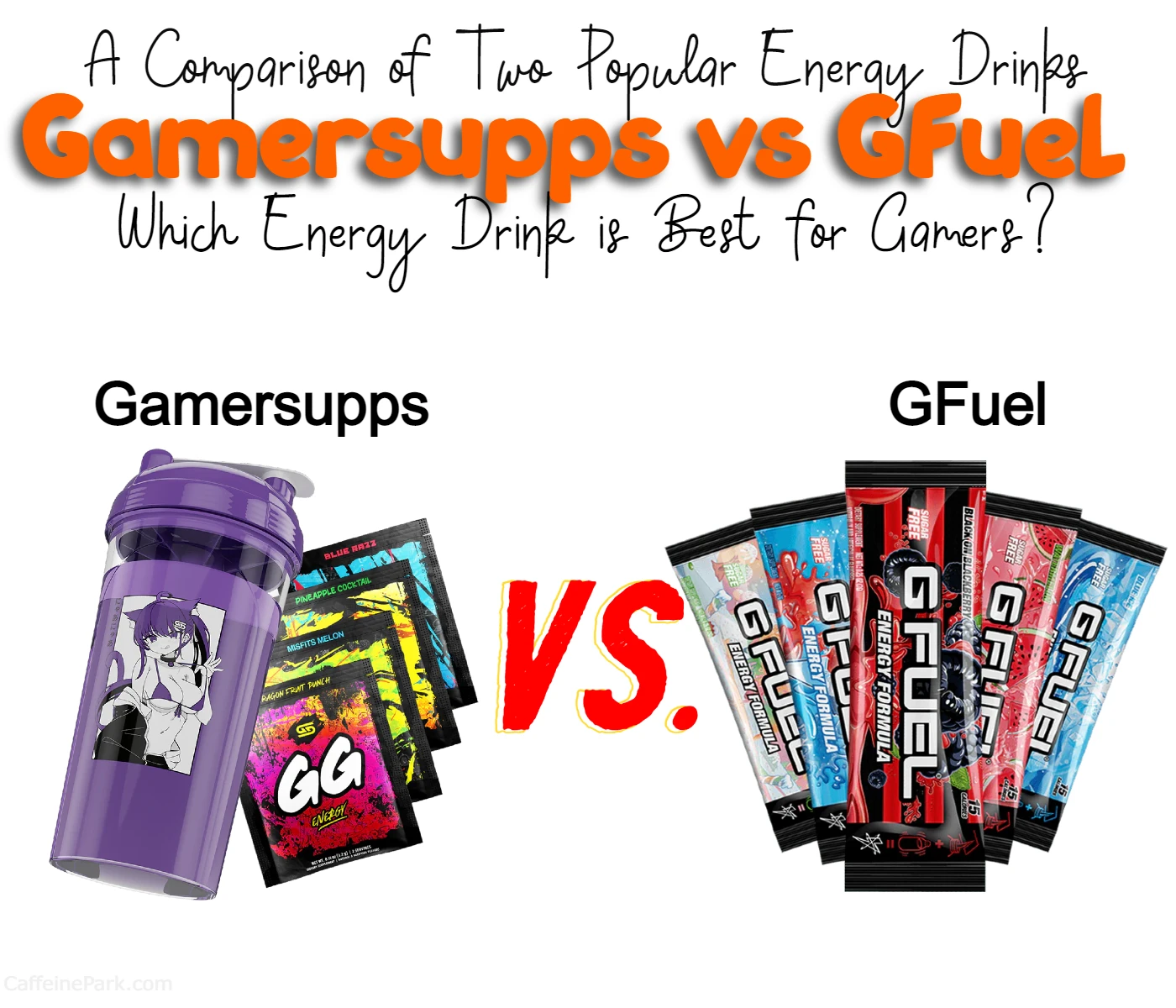
Are you a coffee lover who enjoys experimenting with different types of coffee beverages? If so, you may have heard of lungo and espresso. While both of these coffee drinks are delicious in their own right, they have some significant differences in their brewing method, taste, serving size, and caffeine content. In this blog post, we will take a closer look at these differences to help you decide which one is right for you.
From the brewing method to the taste and serving size, we will explore each aspect of these coffee beverages to give you a better understanding of what sets them apart. Whether you are new to coffee or a seasoned connoisseur, this blog post has something for everyone.
So, if you’re curious to learn more about lungo and espresso, read on until the end of the blog. We’ll provide you with all the information you need to make an informed decision about which one to choose. Whether you prefer a strong and intense coffee or a milder and longer finish, we’ve got you covered. So, sit back, relax, and enjoy the rich and complex flavors that only a perfectly brewed coffee can provide.
Here’s a table summarizing the key differences between Espresso and Lungo:
| Aspect | Espresso | Lungo |
|---|---|---|
| Brewing Method | High-pressure extraction in short timeframe | Extended extraction with more water |
| Volume | Around 30 milliliters (1 ounce) | Around 60 milliliters (2 ounces) |
| Strength | Intense and concentrated | Milder and less concentrated |
| Flavor Profile | Full-bodied, robust, and rich | Smoother and less acidic |
| Crema | Rich and prominent | Less prominent |
| Caffeine Content | Higher concentration | Lower concentration |
| Brewing Equipment | Espresso machines | Espresso machines or alternative methods |
| Serving Suggestions | Standalone shot or as a base for beverages | Standalone or as a base for beverages |
| Food Pairings | Lighter desserts, salads, and seafood | Lighter desserts, salads, seafood |
Differences between Espresso and Lungo
Understanding Espresso
The Essence of Espresso
Espresso, deriving its name from the Italian word for “pressed out,” is a concentrated coffee beverage that packs a powerful punch. It is made by forcing hot water through finely-ground coffee under high pressure. The result is a small, intense shot of coffee, typically served in a demitasse cup.
Brewing Process and Characteristics
The brewing process for espresso involves using an espresso machine equipped with a pump to achieve the necessary pressure. A standard espresso shot is usually around 30 milliliters (1 ounce) and is extracted within a time range of 20 to 30 seconds.
Espresso boasts several defining characteristics. It possesses a robust and full-bodied flavor with a rich crema—a creamy, caramel-colored foam that rests atop the espresso shot. The crema not only enhances the visual appeal but also contributes to the overall taste experience by adding a silky texture and a touch of sweetness.
Serving and Enjoying Espresso
Traditionally, espresso is enjoyed as a standalone shot, sipped slowly to savor its concentrated flavors. However, espresso is also the foundation for many popular coffee beverages like cappuccinos, lattes, and macchiatos. These drinks combine espresso with steamed milk, creating a harmonious balance of strong coffee and velvety milk.
Unveiling the Lungo Experience
The Nature of Lungo
Lungo, an Italian word meaning “long,” is an espresso-based drink that is created by extracting a larger volume of water through the coffee grounds. Compared to a standard espresso shot, a lungo shot uses approximately double the amount of water, resulting in a milder and more diluted flavor profile.
Brewing Process and Characteristics
To brew a lungo, the espresso machine runs water through the coffee grounds for an extended period, typically 45 to 60 seconds. This longer extraction time allows the water to absorb more of the coffee’s soluble compounds, resulting in a higher volume of liquid.
Lungo shots are usually around 60 milliliters (2 ounces) and have a distinct taste profile. They tend to be less intense and have a milder acidity compared to traditional espresso. The crema produced in a lungo shot is also less prominent, owing to the increased extraction time.
Serving and Enjoying Lungo
Lungo shots can be enjoyed on their own, providing a more relaxed and less concentrated coffee experience compared to espresso. Some coffee lovers prefer Lungo for its smoother taste and the ability to appreciate the nuanced flavors in a larger volume. However, lungo shots can also serve as a base for various espresso-based drinks, similar to espresso shots.
Origins and Cultural Significance
Espresso’s Italian Legacy
Espresso has its roots deeply embedded in Italian culture. It was first developed in the early 20th century in Italy, where coffee became a cherished part of daily life. The creation of the espresso machine revolutionized the coffee industry, allowing for the quick and efficient preparation of concentrated coffee shots. Today, espresso is synonymous with Italian coffee culture, with bustling espresso bars found on nearly every street corner in Italy.
Lungo’s Evolution from Espresso
The lungo shot emerged as an evolution of the traditional espresso. While the exact origin of lungo is not as well-documented as espresso, it is believed to have originated in France. Lungo gained popularity as an alternative to espresso, offering a milder flavor profile and a larger volume of coffee.
Brewing Techniques: The Art of Extraction
Espresso’s Precise Extraction
Brewing espresso requires careful attention to detail. The process begins with selecting and grinding the coffee beans to a fine consistency. The finely ground coffee is then tamped into a portafilter, creating a compact puck. The portafilter is then inserted into an espresso machine, and hot water is forced through the puck under high pressure, resulting in the extraction of a small, concentrated espresso shot.
Lungo’s Extended Extraction
In contrast, brewing a lungo involves a longer extraction time. The additional water is passed through the coffee grounds, resulting in a larger volume of brewed coffee. The increased extraction time allows for more extended interaction between the water and the coffee, resulting in a milder and less concentrated flavor profile.
Flavor Profiles: Intensity vs. Smoothness
Espresso’s Bold and Intense Flavor
Espresso is known for its bold and intense flavor profile. The concentrated nature of the brew brings out the coffee’s inherent characteristics, offering a robust and full-bodied experience. Espresso often exhibits notes of dark chocolate, caramel, and pleasant bitterness, making it a favorite among those who appreciate strong and vibrant coffee flavors.
Lungo’s Smooth and Balanced Taste
Lungo, on the other hand, offers a smoother and more balanced taste. The extended extraction time allows for a gentler extraction of flavors, resulting in a milder coffee experience. Lungo shots tend to have a lighter body, lower acidity, and a more delicate flavor profile. This allows for subtle nuances to shine through, with hints of floral, fruity, or nutty notes present in the brew.
Serving Suggestions: Versatility and Creativity
Espresso’s Versatility in Coffee Creations
Espresso serves as the foundation for a wide array of beloved coffee creations. It forms the heart of popular drinks like cappuccinos, lattes, and macchiatos. The combination of espresso and steamed milk allows for a harmonious balance of flavors and textures, creating a creamy and indulgent experience. Espresso shots can also be enjoyed on their own, sipped slowly to appreciate the concentrated flavors and the luscious crema.
Lungo’s Standalone Simplicity and Adaptability
Lungo shots can be enjoyed on their own, offering a more relaxed and less intense coffee experience compared to espresso. The milder flavor profile of lungo allows for a gentle sipping experience, perfect for those who prefer a less concentrated brew. Additionally, lungo shots can be used as a base for other coffee beverages, just like espresso, providing versatility and adaptability in creating various recipes.
The Crema: Aesthetics and Texture
Espresso’s Rich and Velvety Crema
One of the defining characteristics of espresso is its luscious crema—a creamy layer that forms on top of the shot. The crema is a visual delight, with a caramel-colored appearance that adds to the allure of espresso. It is created through the emulsification of oils present in the coffee beans during the high-pressure extraction process. The crema not only enhances the aesthetics but also contributes to the texture and overall taste experience, providing a silky mouthfeel and a touch of sweetness.
Lungo’s Subtle Crema Presence
In comparison, lungo shots tend to have a less prominent crema. The extended extraction time and larger volume of water used in brewing a lungo result in a thinner layer of crema. While it may not be as thick or visually striking as the crema on an espresso shot, lungo’s crema still adds a delicate layer of texture to the drink.
Caffeine Content: Strength and Kick
Espresso’s Concentrated Caffeine Punch
Espresso is renowned for its high caffeine concentration, offering a powerful kick in a small serving size. The intense extraction process extracts a significant amount of caffeine from the coffee grounds, resulting in a potent shot of energy. However, it’s important to note that the actual caffeine content may vary depending on factors such as the type of coffee beans used and the brewing method.
Lungo’s Diluted Caffeine Experience
In contrast, lungo shots have a lower caffeine concentration due to the extended extraction and larger volume of water used. While Lungo still contains caffeine, the milder flavor profile may give the perception of a less stimulating brew. It’s worth mentioning that individual preferences and tolerance levels can also influence the perceived effects of caffeine.
Brewing Equipment: Espresso Machines and More
Espresso Machines for Precision Brewing
Espresso requires specialized brewing equipment, primarily espresso machines, to achieve the necessary pressure and temperature control. Espresso machines come in various types, including manual, semi-automatic, and fully automatic, allowing for precise control over the brewing process. These machines often feature a built-in grinder, a portafilter, and steam wands for frothing milk, enabling coffee enthusiasts to create professional-level espresso shots.
Lungo Brewing Options
While espresso machines are commonly used for lungo preparation, alternative brewing methods can also be employed. Some coffee lovers prefer using a stovetop espresso maker (Moka pot) or a French press to brew lungo shots. These methods allow for more control over the extraction time and water volume, resulting in a customized lungo experience.
Pairing with Food: Enhancing the Coffee Experience
Espresso and Food Pairings
The intense flavor and robustness of espresso make it a perfect companion to certain foods. Its bold profile can complement rich desserts like dark chocolate, tiramisu, or biscotti. The bitterness of espresso can also contrast beautifully with creamy desserts, such as panna cotta or crème brûlée. Additionally, espresso pairs well with savory dishes like roasted meats or aged cheeses, where its strong flavors can cut through the richness and enhance the overall dining experience.
Lungo’s Versatility in Pairings
Lungo’s milder taste profile offers versatility when it comes to food pairings. It harmonizes well with lighter desserts like fruit tarts, shortbread cookies, or delicate pastries. The subtler flavors of lungo won’t overpower more delicate dishes like salads, seafood, or lighter pasta dishes, allowing the flavors of the food to shine through. Lungo’s adaptability makes it a flexible choice for enjoying coffee alongside a variety of culinary delights.
Making the Choice: Espresso or Lungo?
When it comes to choosing between espresso and lungo, personal preference plays a significant role. Here are a few considerations to guide your decision:
- Strength Preference: If you enjoy bold and concentrated flavors, espresso is the way to go. On the other hand, if you prefer a milder and smoother taste, lungo is a better option.
- Volume: If you prefer a smaller, quick shot of coffee, espresso is the perfect choice. For those who enjoy a larger volume of coffee to savor, lungo offers a more substantial serving size.
- Usage: If you love experimenting with various coffee beverages and milk-based creations, espresso provides a versatile base. If you prefer simplicity and enjoy standalone coffee shots, lungo offers a more straightforward and relaxing experience.
Ultimately, both espresso and Lungo have their unique charms and can be appreciated for their distinct characteristics. The choice between the two depends on your taste preferences, desired strength, and the overall coffee experience you seek.
So, whether you find joy in the intense and concentrated flavors of espresso or prefer the smoother, milder nuances of lungo, these espresso-based beverages promise to delight and satisfy your coffee cravings. Cheers to the endless possibilities of the coffee world!
Alternatives to Espresso and Lungo
If you’re looking for alternatives to espresso and lungo, there are several other coffee beverages that offer unique flavors and brewing methods. Here are a few popular alternatives to consider:
- Americano: An Americano is made by diluting a shot of espresso with hot water. It provides a similar strength as lungo but with a slightly different flavor profile. Americano has a smoother taste compared to espresso and is often enjoyed black or with a splash of milk.
- Cappuccino: Cappuccino is a classic Italian beverage made with equal parts espresso, steamed milk, and milk foam. It has a balanced flavor and a velvety texture. Cappuccino is often topped with a sprinkle of cocoa or cinnamon for added aroma and visual appeal.
- Latte: Latte, also known as caffè latte, consists of a shot of espresso topped with steamed milk and a small layer of milk foam. It has a creamier and milkier flavor compared to cappuccino. Latte is often served in a larger cup and can be customized with syrups or flavorings.
- Mocha: Mocha, or caffè mocha, combines espresso, steamed milk, chocolate syrup or powder, and whipped cream. It offers a delightful blend of coffee and chocolate flavors, making it a popular choice for those with a sweet tooth.
- Flat White: Originally from Australia and New Zealand, the flat white is a coffee drink made with a double shot of espresso and a small amount of velvety microfoam milk. It has a strong coffee flavor with a smooth and creamy texture.
- Pour-Over Coffee: Pour-over coffee is a manual brewing method where hot water is poured over a bed of coffee grounds in a filter. The water slowly drips through the grounds, extracting the flavors and producing a clean and flavorful cup of coffee. This method allows for customization of the brewing process and is favored by coffee enthusiasts for its simplicity and control over the extraction.
- French Press: The French press is a popular brewing method that involves steeping coarse coffee grounds in hot water and then pressing a plunger to separate the grounds from the liquid. It produces a full-bodied and robust cup of coffee with a rich flavor profile.
FAQs
The main difference between lungo and espresso is the brewing method. Espresso is brewed using a small amount of water and high pressure, which results in a concentrated shot of coffee. Lungo, on the other hand, uses more water than espresso, allowing the coffee to be brewed for a longer period, resulting in a milder flavor with a longer finish.
Lungo has more caffeine than espresso. While a single shot of espresso typically contains around 64 milligrams of caffeine, a lungo serving can have around 94 milligrams of caffeine.
It depends on the recipe. If a recipe specifically calls for espresso, using lungo may result in a weaker coffee flavor. Similarly, if a recipe calls for lungo, using espresso may result in a stronger coffee flavor that may overpower other ingredients in the recipe.
Espresso is the preferred choice for making cappuccinos and lattes as it has a bold and intense flavor that can hold up well to the addition of milk and other flavorings. Lungo, on the other hand, is not typically used as a base for other coffee drinks.
Yes, you can use the same type of coffee beans for making both lungo and espresso. However, the grind size and amount of coffee used may differ depending on the brewing method. For example, espresso requires a fine grind, while lungo requires a slightly coarser grind.
It depends on personal preference. If you prefer a milder coffee with a longer finish, lungo may be a better choice. If you prefer a strong and intense coffee, espresso may be a better choice. Ultimately, it’s important to experiment with both and find the one that suits your taste.
Read More:
Contents
- Differences between Espresso and Lungo
- Understanding Espresso
- Unveiling the Lungo Experience
- Origins and Cultural Significance
- Brewing Techniques: The Art of Extraction
- Flavor Profiles: Intensity vs. Smoothness
- Serving Suggestions: Versatility and Creativity
- The Crema: Aesthetics and Texture
- Caffeine Content: Strength and Kick
- Brewing Equipment: Espresso Machines and More
- Pairing with Food: Enhancing the Coffee Experience
- Making the Choice: Espresso or Lungo?
- Alternatives to Espresso and Lungo
- FAQs





